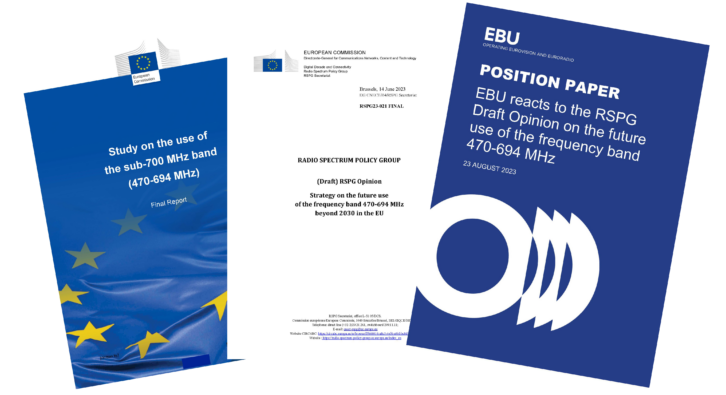 Currently in the European Union, broadcasting services have priority in using the lower UHF band (470–694 MHz) through 2030. What happens beyond that date though is currently under discussion by the European Commission’s Radio Spectrum Policy Group.
Currently in the European Union, broadcasting services have priority in using the lower UHF band (470–694 MHz) through 2030. What happens beyond that date though is currently under discussion by the European Commission’s Radio Spectrum Policy Group.
Following a 2022 study, the RSPG released in June a draft opinion on how best to use the frequencies beyond 2030. The opinion comes ahead of the ITU World Radiocommunication Conference 2023 being held in Dubai, United Arab Emirates, Nov. 20–Dec. 15, 2023.
One of the agenda items for WRC-23 is to review the spectrum use and needs of existing services in the frequency band 470–960 MHz in Region 1, and to consider possible regulatory actions. ITU Region 1 includes Europe, Africa and the Middle East, as well as Mongolia and the nations of the Commonwealth of Independent States.
In its draft opinion, the RSPG noted that, because of differences across the European Union, a harmonized approach to the frequencies would be difficult. The spectrum is widely used for free-to-air DVB-T digital terrestrial television services, as well as for wireless microphones in DTT white spaces. However, E.U. member states do have flexibility to introduce other services to the band if it is not needed for DTT and doesn’t interfere with neighboring nations’ use.
The RSPG noted several possible additional services that might be introduced, including supplementary downlink (SDL) implementation for mobile communications; 5G Broadcast; and frequency division duplex mobile operations. The last one is the approach the United States and Canada have taken towards the 600 MHz band.
The European Broadcasting Union — which represents 112 public services broadcasting organizations in 56 nations primarily across Europe, North Africa and the Eastern Mediterranean — welcomed the approach taken by the RSPG in its review.
[Read more Radio World news from around the world.]
In its August 2023 response to the draft opinion, the EBU noted the lower UHF band “is crucial infrastructure for public service media not only from a technical point of view, but also from a societal perspective.” The EBU also supported the conclusion that a single approach to the band would not work for all member states.
However, the EBU also cautioned that public service broadcasters in the region would likely need to continue to use 470–694 MHz frequencies for broadcasting beyond 2030.
In the position paper responding to the draft opinion, the EBU wrote: “Broadcasting services are essential for PSM as they provide free-to-air, high-quality content and services that aim to inform, educate and entertain every citizen, wherever they are. They also support national sovereignty in providing reliable information to citizens, vital in times of crisis and in emergency situations. Broadcasting services need to retain access to the 470-694 MHz band well beyond 2030 and possibly until at least 2040,”
Looking at the specific technical recommendations, the EBU expressed concern about the potential interference that SDL, 5G Broadcast or FDD mobile could cause broadcast services.
The EBU noted that while some nations are trialing 5G Broadcast in the lower UHF band, no EBU member nation has looked to introduce mobile services to frequencies below 700 MHz. Annex III of the RSPG report documented 5G Broadcast trials in Austria, Czechia, France and Spain. The EBU’s position paper included information about trials in Germany.












